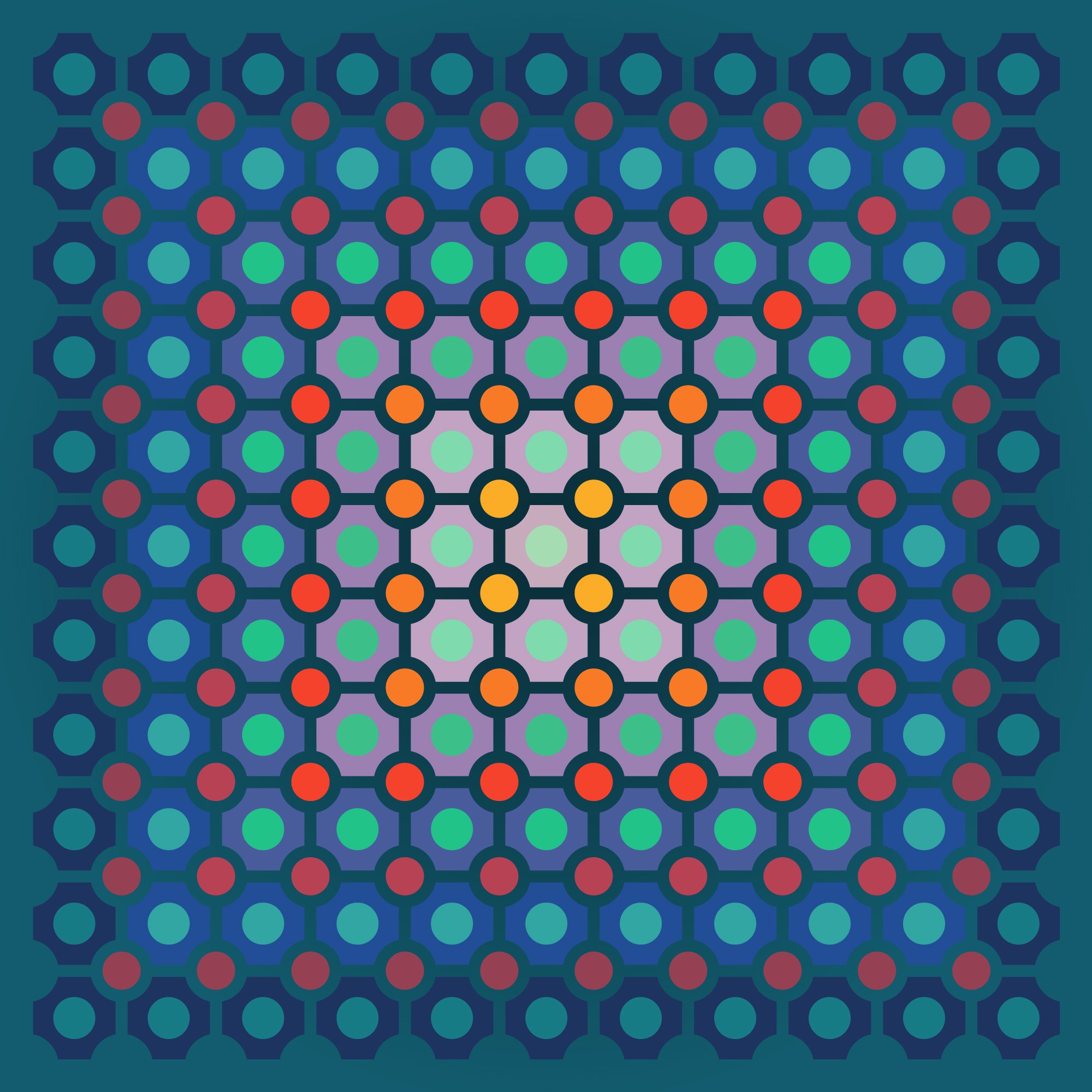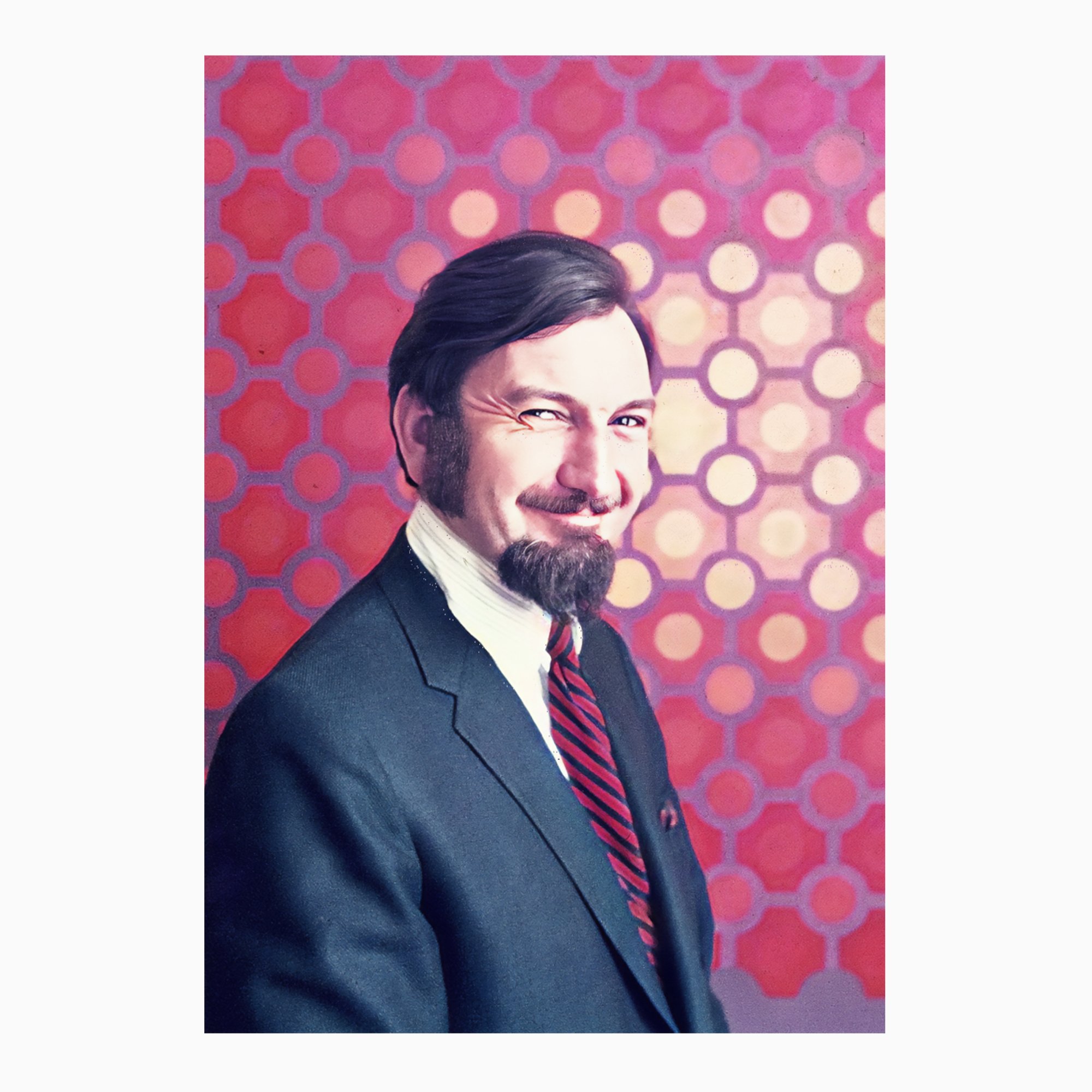Eye-popping op-art — a tribute to one of Aotearoa’s ‘greatest colourists.’
My brothers and I grew up in a home full of colour. The food Mum made for us, the music my Dad played, and the paintings he painted brightened the house alongside the art and company of their friends. We were lucky kids.
Sometimes, after dinner, I‘d sit and watch the black-and-white TV in the corner of his studio while he worked. It was a magical place behind a garage at the back of our house with a fire crackling and the smell of turpentine, linseed oil, oil paints, and wood smoke.
In the early seventies, Dad was a prolific nighttime painter. He’d stretch and prime large canvases with gesso and carefully mark out the hard-edged abstractions of urban life he painted in blue dropout pencil to prepare his work.
The process behind his Abacus Series of colour grid paintings was mesmerising. A large square white canvas gridded in a mosaic of faint blue lines would slowly transform from the outside edge to the centre into an optical vibration of colour as he mixed and painted the transitions, working up and down the colour spectrum like scales of the classical music that played while he painted.
Only when the final colour touched the canvas would the magic be revealed, or a wrong note need repainting
John exhibited the first Abacus paintings in Christchurch in 1967. The series struck a chord, and the works found their way into public and private collections across New Zealand and Australia.
Recently, we figured out how to digitally recreate the paintings he’d meticulously crafted by hand and play with the transitions on screen.
We’ve uncovered some of the series with the help of the internet and friends like Jonathan and Fiona Eaton, admirers of John’s work who restored two paintings from the collection of his great mate and creative co-conspirator, Jonathan’s father, Michael Eaton.
When we rediscover a painting, I try to create a new digital variation in the same spirit, following the process I learned watching him as a kid.
This exhibition includes a collection of eight variations celebrating the colour John captured in his original paintings over 50 years ago.
Simon Coley
About the artist
Born in Palmerston North in 1935, John Coley attended Palmerston North Boys’ High School and evening art classes at the Technical School, taught by Alan Leary, who also taught his great friend Pat Hanly.
After a period as a cadet reporter for the Manawatu Evening Standard in 1955, he entered the Canterbury University School of Fine Arts.
He taught at Papanui High School before joining the art department of the Christchurch Teachers’ College. John was appointed director of the Robert McDougall Art Gallery in 1980, retiring in 1996 to become a full-time painter.
Since graduation, he has maintained activity as a painter, exhibiting with the Christchurch Group, founding the 20/20 Vision group of artists, and holding numerous one-man shows.
His works can be found in New Zealand's public and private art collections and abroad. He has been a columnist for the Christchurch Star, The Listener and The Press and has written biographies of the artist Jane Evans and Christchurch builder Charles Luney.
He advocated for a new art gallery throughout his time as director of The Robert McDougal Art Gallery to ensure that Christchurch Art Gallery Te Puna o Waiwhetū would be funded and built. He was also responsible for establishing the McDougall Art Annex contemporary art space, and for many years, he was closely associated with the Canterbury Society of Arts.
In 1988 he was appointed MBE for his contribution to the visual arts.
With his wife Fay and sketching and travelling companion architect Sir Miles Warren, he has made expeditions to many countries and exhibited the watercolours he made on these journeys.
John and Fay moved to Auckland to be near family in 2007.
John continues to champion the arts, artists, and arts education system that allowed him and his peers to contribute to a legacy of visual culture that has developed to become uniquely representative of Aotearoa, New Zealand.



